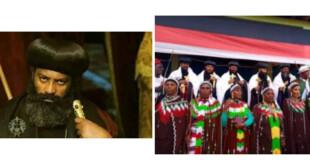http://www.africanews.com/
Ethiopia is no stranger to ethnic tensions.
Earlier this year, members of the country’s largest ethnic group, the Oromo, took the the streets in violent demonstrations.
Now, by no coincidence, it is the second biggest group, the Amhara, who are protesting.
Tens of thousands gathered on Sunday to protest governance issues – principally that a minority ethnic group, the Tigray, have continued to rule the country since the last military ruler Mengistu Haile Mariam was deposed, as far back as in 1991.
Africanews’ correspondent in Ethiopia, Antoine Gilando, confirmed the reasons for the protest on ‘The Morning Call’program explaining further that even with their ties to a relatively smaller population, the ruling Tigray People’s Liberation Front (TPLF) had established a hegemony at the helm of the political establishment.
The latest protest has a common thread with the earlier demonstrations in Oromia because once more it is seen as opposing popular against the powerful.
At the heart of the current protest
Local media report that the Welkait community, a group administered by the far north Tigray region had requested since a year ago to be realigned politically with the neighbouring Amhara region.
The community’s representatives under the banner of the ‘Welkait Amhara Identity Committee’ said they did not want to be ruled by Tigray and the reason for opting for Amhara was because they identified themselves as ethnic Amharas.
Tensions had been rising for two weeks before culminating in last Sunday’s protest sparked by social media activism. Tens of thousands thronged the streets of Gondar in peaceful protest over boundary positioning but also decrying issues of human rights.
The Tigray group according to the Central Intelligence Agency (CIA) estimates of 2007, are the fourth largest ethnic group (6.1% of the population) behind the Oromo, Amhara and Somali which account for 34.4%, 27% and 6.2% respectively.
Since the current government came to power in 1991, it has introduced a federal governance structure with regional states based around ethnicity and language groups. Ethnic tensions according to political watchers are not limited to Amhara and Oromo.
Before last Sunday’s Gondar protests, Ethiopia had made global news headlines for two good reasons.
The country nestled in the Horn of Africa region had won a seat as a non permanent member of the United Nations Security Council in June, the country also hosted the Israeli prime minister Benjamin Netanyahu on his African tour in early July this year.
These were two diplomatic highs for the country but have not masked internal discord.
The government in February 2016 dismissed claims by rights group Human Rights Watch (HRW) that it violently suppressed the anti-government protests in the Oromia region.
With no word from the seat of government in Addis Ababa, it is a clear signal that the government would rather have the issue dealt with at the regional level. But what, if any, action will follow is unclear.





